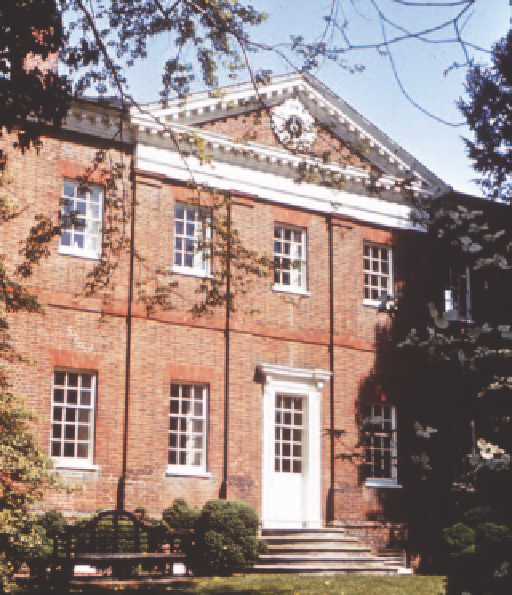Agriculture Reference
In-Depth Information
Figure 113
Hammond-Harwood
House, Annapolis,
Maryland, 1774.
(Courtesy of the
Hammond-Harwood
House Association)
study. As mentioned in Chapter 3, the lavish, classically English three-storey
'Rosewell' (1726-37), Gloucester County, Virginia - sadly burned in 1916 -
remains 'a masterpiece of the mason's craft', with imported Portland cut stone
dressings for the window openings and chimneys and exquisitely executed
gauged brickwork dressings of the highest order of craftsmanship (see Fig.
64, page 139). In the remaining brick shell one can still determine accurately
gauged 'jack' and segmental arches, cut-moulded belt courses. It is not known
if the rubbing bricks were imported at the same time as the stone and several
other items used on and in the property. It is more likely, however, that the
bricks were made locally.
David Minitree (c.1700-1774) - Brickmaker and
Master Bricklayer
According to Colonial Williamsburg archival records, Whitehead (2005):
The exact date birth of David Minitree is unknown, but it is believed that he was
born in Virginia around 1700-05. He was the son of a French Huguenot black-
smith, also called David, who arrived in Virginia on the ship 'Peter and Anthony'
in 1700, and is recorded as having worked on the original Capitol building and
Public Gaol in 1710.

